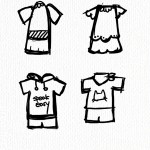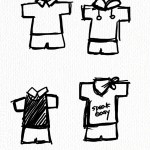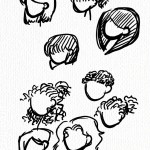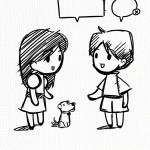-
Recent Posts
Recent Comments
Archives
Categories
Meta
Language-Learning Research
We of Speakeasy are not linguists. Nor are we cognitive psychologists, educators, or academics of any kind. Obviously we can’t attempt to get our minds up to speed with the likes of our clients’ or their peers, but our journey began with a training-montage-esque few weeks of increasingly feverish research to understand the research space we were tumbling deeper and deeper into.
Apparently, if you call it “language acquisition” you’re a Chomsky-ite, and if you call it “language learning” you’re anti-Chomsky. Who is Noam Chomsky? I don’t even… here are some resources we found useful besides Wikipedia:
- Computerized Games and Simulations in Computer-Assisted Language Learning: A Meta-Analysis of Research – this was great at giving an overview of what’s popular right now. Most of this research was in how multiplayer games can provide meaningful context for interaction between two groups of speakers of each others’ target languages.
- Will Mobile Learning Change Language Learning? – an interesting take on what mobile learning offers, in particular how the user’s present physical/personal context can enter into the learning equation.
- Serious Games for Second Language Retention – being able to look at an example of an attempt to achieve a very specific language-learning goal was helpful. Seeing their effort to break down the process and the different possible approaches was useful, although ultimately their product didn’t seem to break new ground.
- http://how-to-learn-any-language.com/forum/default.asp – this is a huge gathering-place for independent language learners. The perspectives here on existing language coursers have been invaluable in looking at how real people endeavor to teach themselves language.
We looked at quite a few papers beyond the above, but most of what we found turned out to be of little utility. Most language-learning papers are above our heads (except Reid who is exceptionally tall), and the most recent studies involving symbolic icons and learning/guessability tended towards the field of GUI design. Using a spatially-mapped icon language as a way to help ease new speakers into a target language is, in our understanding, pretty new!
Posted in Uncategorized
Leave a comment
Tech and pipeline – why 3D?
On the tech side, we knew very early that we would be rendering a graphical gameworld as a way to engage the player. One of the first discussions we had all together in terms of art direction and pipeline was whether we would render our world in 2D or 3D. We knew we didn’t want to even be thinking about exploring 3D worlds or any kind of spatial action game – the language focus immediately pointed us towards dialog, and dialog means varied characters and a few different contexts/environments.
Why would we choose 3D for this, especially on a mobile device? That was the first reaction of our engineering team, too. The following points explain why the decision was clear:
- Scene and skeletal animation (frame/spritesheet out of the question because of avatar customization) editing in 2D would require special tools. Quick research indicated we would have to write these ourselves – not only that, but our artists would have to learn them. Working in 3D allows our artists to create animations and organize scenes in the tools they already know: 3ds Max and Maya.
- One of our artists (Reid) is an expert in 3D environment design – the choice to go with 3D was partially motivated by the chance to have him exercise those skills to give our world unique and attractive flavor.
- The whiz-bang factor of 3D environments that shift with perspective is something that will likely present a strong draw for our players, who on Android aren’t yet accustomed to 3D.
And so it was decided – both tech and art agreed that 3D presentation was the way to go, despite the challenges. We had to get up and running fast – after considering a number of Android-compatible 3D rendering libraries (including Unity) we hit on jPCT, which is small and quick to pick up, has extensions supporting skeletal animation (which in 3D isn’t completely necessary for us but is a way to save significant amounts of storage space and loading time), allows us to work within the Java Android SDK (Unity failed this requirement), and has one of the most mature Android ports among any we’ve seen. Ninjas jumping skeletally at high framerates and polycounts on our target platform quickly proved that we’d made a viable decision.
Posted in Uncategorized
Leave a comment
Hello world!
Well, we’ve gotten quite a lot done in the last 5 weeks. Prototypes, meetings, and a ton of research! Up until last week we were still in the thought space. Now it’s time to do, and do we shall. Solip has been working through some wonderful art assets, Li has our interaction demo working, and we’ve beaten ourselves over interactions until we got something that works. The train has started moving.
Posted in Uncategorized
Leave a comment





